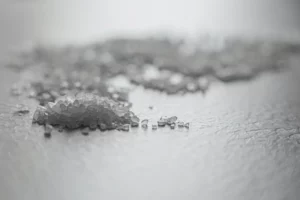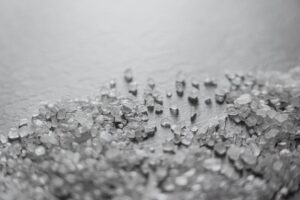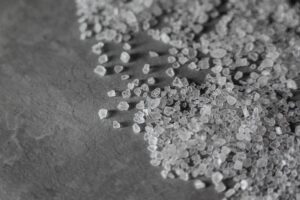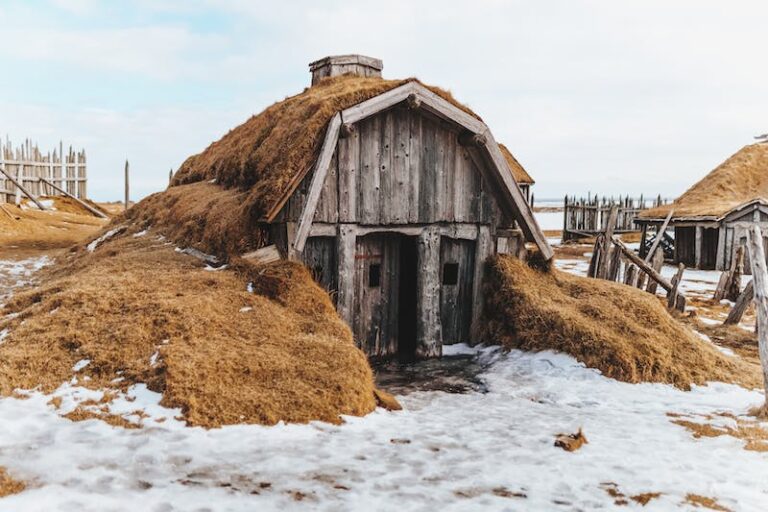Winter is coming to an end Stouffville. Or maybe it’s not! Maybe we have a couple more months of this crazy weather, who knows, it’s Stouffville after all. For the last couple of years we here in the town of Stouffville have seen 12 degrees Celsius in February only to see snowfall in May. It’s one crazy town we leave in, our dead Stouffville.
During the winter months, salt is a commonly used substance for melting ice and snow on driveways and walkways. While salt is effective at preventing slips and falls, it can also have detrimental effects on the surfaces it comes into contact with. Understanding the impact of salt on driveways and walkways is essential for homeowners who want to maintain their property’s integrity and prevent costly damage. In this comprehensive guide, we’ll explore the effects of salt on driveways and walkways, as well as strategies for mitigating its harmful effects. And remember – the professionals can salt for those who don’t want too!
1. Chemical Reactions and Corrosion
One of the primary effects of salt on driveways and walkways is chemical corrosion. When salt comes into contact with concrete, asphalt, or other paving materials, it can initiate chemical reactions that weaken the surface over time. The salt lowers the freezing point of water, causing ice to melt more rapidly. However, as the melted ice seeps into the porous surface of the pavement, it carries salt with it. Over time, the salt can penetrate deep into the pavement, leading to corrosion of the underlying materials.

2. Surface Damage and Cracking
Repeated exposure to salt can also cause surface damage and cracking on driveways and walkways. As the salt corrodes the surface materials, it weakens their structural integrity, making them more susceptible to cracking and crumbling. This can result in unsightly and potentially hazardous conditions, as cracked or uneven surfaces pose tripping hazards for pedestrians and vehicles alike. Additionally, the freeze-thaw cycle exacerbates the damage by causing water to expand and contract within the cracks, leading to further deterioration over time.
3. Discoloration and Staining
In addition to physical damage, salt can also cause discoloration and staining on driveways and walkways. As salt dissolves in water and interacts with the surface materials, it can leave behind white or yellowish residue that detracts from the appearance of the pavement. This residue can be difficult to remove, especially on porous surfaces such as concrete. Over time, the accumulation of salt residue can result in unsightly stains that diminish the curb appeal of the property.
4. Environmental Impact
Beyond its effects on pavement surfaces, salt runoff from driveways and walkways can also have negative environmental consequences. When salt-laden water enters storm drains or nearby waterways, it can disrupt the delicate balance of aquatic ecosystems. High concentrations of salt can harm aquatic plants and animals, interfere with the natural filtration of water, and contribute to soil salinity. In urban areas, salt runoff can also contaminate groundwater supplies, posing risks to human health and the environment.
Mitigating the Effects of Salt on Driveways and Walkways:
1. Proper Application Techniques
To minimize the negative effects of salt on driveways and walkways, it’s essential to use proper application techniques. Avoid over application of salt, as excess salt can exacerbate corrosion and environmental damage. Use a calibrated spreader to ensure uniform coverage and apply salt sparingly to high-traffic areas where safety is a primary concern. Additionally, consider using alternative de-icing agents such as calcium chloride or magnesium chloride, which are less damaging to pavement surfaces and the environment.
2. Prompt Removal and Cleaning
After the snow has melted and the ice has been cleared, it’s important to promptly remove any remaining salt residue from driveways and walkways. Use a broom or pressure washer to sweep or rinse away salt residue, paying particular attention to areas where salt may have accumulated. Regular cleaning helps prevent salt buildup and reduces the risk of discoloration and staining on pavement surfaces. For stubborn stains, consider using a commercial cleaner specifically formulated for removing salt residue from concrete and other paving materials.
3. Sealcoating and Protective Coatings
Applying a sealcoat or protective coating to driveways and walkways can help mitigate the effects of salt and extend the life of the pavement. Sealcoating creates a protective barrier that seals out moisture and prevents salt from penetrating the surface materials. Additionally, sealcoating can enhance the appearance of the pavement and make it easier to clean and maintain. Be sure to follow manufacturer guidelines for proper application and reapplication of sealcoating to maximize its effectiveness.

4. Alternative De-Icing Methods
In addition to traditional salt-based de-icing methods, consider exploring alternative de-icing methods that are less harmful to pavement surfaces and the environment. Options such as sand, kitty litter, or even sugar beet juice can provide traction on icy surfaces without causing damage or pollution. Some municipalities and homeowners’ associations have also implemented brine solutions or heated pavement systems as eco-friendly alternatives to traditional salt-based de-icing methods.
5. Regular Maintenance and Inspection
Finally, proactive maintenance and inspection are key to preserving the integrity of driveways and walkways in winter. Regularly inspect pavement surfaces for signs of damage or deterioration, such as cracks, potholes, or spalling. Promptly address any issues to prevent further damage and extend the lifespan of the pavement. Additionally, schedule routine maintenance tasks such as filling cracks, sealing joints, and applying protective coatings to keep driveways and walkways in optimal condition throughout the winter season and beyond.

While salt is a common and effective de-icing agent for driveways and walkways, its use can have detrimental effects on pavement surfaces and the environment. Understanding the impact of salt on driveways and walkways is essential for homeowners who want to protect their property and minimize environmental damage. By employing proper application techniques, prompt removal and cleaning, protective coatings, alternative de-icing methods, and regular maintenance, homeowners can mitigate the effects of salt and ensure the long-term durability and appearance of their driveways and walkways. With proactive measures in place, it’s possible to enjoy safe and functional pavement surfaces year-round, even in the harshest winter conditions. And remember – the professionals can help salt!





